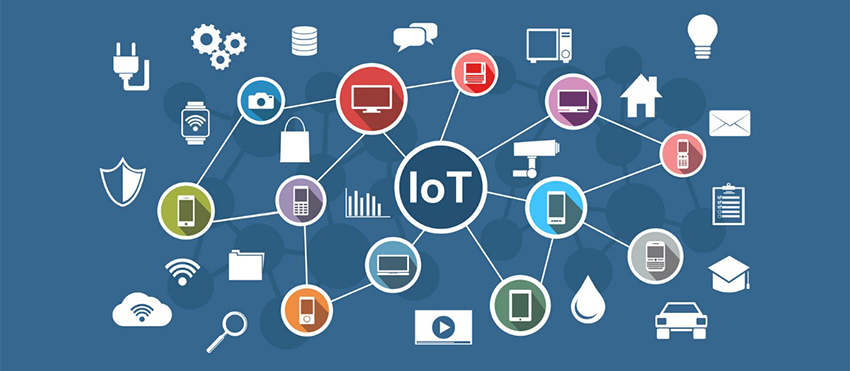
Initially, this was going to be a simple blog post about building an internet connected device more commonly referred to as Internet of Things (IoT) device. But, as I was gathering information I soon realized there is a lot that goes into building a device. So I decided to break this up into 4 blog posts over the next few months:
- Brief intro to IoT devices and the market potential (this blog post)
- Aggregation – building an IoT device to capture the data and sending it to the cloud
- Analytics – how do you analyze the data
- Action – how do you monetize the data
What is an IoT Device?
An IoT device is a piece of hardware with a single sensor or multiple sensors that transmits the data from the sensor to the cloud via the internet. Some examples of IoT devices are a fitness tracker, smart door locks, proximity badge readers, etc…
In an industrial setting they are called IIoTs (Industrial Internet of Things) and used to monitor the efficiency of machinery, room temperature and humidity, predictive maintenance, etc… In an industrial setting they have had sensors and systems for decades but that is all old school technology using RS-485 connections which means the data is usually stored locally.
There is a big trend called Industry 4.0 which is the “fourth industrial revolution” and part of that is to have these sensors connect via TCP/IP (the protocol of the internet) and send the data to the cloud where it can be aggregated and analyzed.
It’s easy to find reports on how large the IoT market is and all the big consulting companies will roll out their 2020 and 2025 future trends reports. But, I like to look at what the programmers have to say and what do they think of the technology and space. Below is a graph from the latest HackerRank 2019 Developer Skills Report and you can see IoT is at the top of what technology people feel is the most real emerging technology.

Even in a consumer setting the growth of IoT devices is explosive. Using a Nest Thermostat you can control the temperature of your home from anywhere. Using an August door lock you can literally open the door to your home from anywhere in the world. The Canary camera is a security camera that also monitors the air quality, temperature, and humidity in your home. All these devices have sensors that send data back to the cloud and then using an app you can control the various settings when you are not physically in your home.
The Market Potential of IoT Devices
Why is the market getting bigger and do we really need all these devices? I will not bore you with potential market size numbers but instead give you some examples of how the space is growing and why.
Take the above example I gave of the 3 IoT devices for a home, imagine you have listed your house on Airbnb those 3 devices make it so much easier to manage and understand the usage of your property. Without them putting your house on Airbnb would seem risky.
As I mentioned the industrial complex has always had sensors to monitor equipment but the data was always stored locally. With an IoT device the company can now aggregate all their data and make better predictions and spot trends much easier from a centralized team of machine learning experts.
Lastly, IoT is replacing repetitive tasks that previously were handled by humans such as energy meters. In India, the electricity bill you get every month has energy usage that has been collected by a person that visits every meter and takes the reading. Today, it’s a manual process in the future it will be replaced by an IoT sensor – that can detect the energy consumption, send that data to the cloud and then your bill will get generated.
The next post in this IoT series is about Aggregation, building an IoT device to capture the data and sending it to the cloud.


Upcoming blog posts seem super exciting, looking forward to them
Aakash,
Thanks and yes the upcoming posts are quite detailed.